ARABIC MANUSCRIPTS OF AVARS IN THE KHUNZAKH REGION OF THE REPUBLIC OF DAGESTAN
Alibekova Patimat Magomedovna[*]
Abstract
The process of Islamization of Dagestan contributed to the spread of Muslim culture, the most important part of which is the written culture created by various peoples of the countries of the Arab Caliphate. Islamic book culture has penetrated all corners of Dagestan. This fact testifies to the high level of development of the spiritual culture of the "host" side, which allowed it not only to brilliantly master the Arab-Muslim literature, but also on its basis to create the Dagestani Arabic-speaking, Persian-speaking and Turkic-speaking literature proper. The richest literature created by Dagestan scholars, poets, theologians constitutes a unique fund of Dagestan's book culture. Interviews with local communities, working with Khunzakh manuscripts and early printed books have yielded positive results. Khunzakh district occupies one of the key positions in terms of the level of development of Muslim culture, education and scientific thought. The study of the book collections of oriental manuscripts from the villages of the Khunzakh Highlands continues. This work is important for the study of the spiritual culture of the peoples of Dagestan.
Keywords: Medieval Dagestan, Avar scholars, manuscripts, old printed books, Arabic-language sources.
Öz
Dağıstan’ın İslamlaşma süreci Müslüman kültürün yayılmasına katkı sağladı, en önemli katkı Arap Halifeliğine bağlı olan ülkelerdeki farklı insanlar tarafından meydana getirilen yazılı kültürdür. İslami kitap kültürü Dağıstan’ın her köşesine yerleşti. Bu gerçek, "ev sahibi" tarafın doğal kültürünün yüksek seviyede gelişmesine tanıklık etti. Bu sadece Arap-Müslüman edebiyatının akıllıca hâkim olmasına izin vermekle kalmadı, aynı zamanda, Dağıstan Arap diline, Fars diline ve Türk diline uygun bir edebi zeminin oluşmasına temel oluşturdu. Dağıstan alimleri, şairleri, ilahiyatçıları tarafından yaratılan bu zengin edebiyat, Dağıstan’ın kitap kültürünün eşsiz bir tarafını oluşturur. Khunzakh el yazmaları ve ilk basılmış kitaplarla çalışan yerel topluluklarla yapılan görüşmeler olumlu sonuçlar verdi. Khunzakh bölgesi, Müslüman kültürü, eğitimi ve bilimsel düşüncenin gelişme düzeyi açısından kilit konumlardan birini işgal ediyor. Bu, Khunzakh Yaylası ülkelerinin köylerinden doğuya özgü el yazmalarının kitap koleksiyonlarının çalışması. Bu çalışma, Dağıstan halklarının ruhani kültürünün incelenmesi için önemlidir.
Anahtar Kelimeler: Ortaçağ’da Dağıstan, Avar bilginleri, el yazmaları, eski basılı kitaplar, Arapça kaynaklar.
Introduction
The process of Islamization of Dagestan contributed to the spread of Muslim culture, the most important part of which is the written culture created by various peoples of the countries of the Arab Caliphate. Islamic book culture has penetrated all areas of Dagestan. This fact testifies to the high level of development of the spiritual culture of the "receiving" side, which allowed it not only to brilliantly master the Arab-Muslim literature, but also on its basis to create the Dagestani Arabic-speaking, Persian-speaking and Turkic-speaking literature proper. The richest literature, created by Dagestani scientists, poets, theologians, constitutes a unique fund of the book culture of Dagestan.
Khunzakh district of Dagestan occupies one of the key positions in terms of the level of development of Muslim culture, education and scientific thought. The study of private and mosque libraries of oriental manuscripts preserved in Khunzakh villages provides us with rich material testifying to the wide spread of written culture, a network of educational institutions in which scientists known throughout Dagestan and beyond were engaged in teaching and scientific activities. There are private and mosque manuscript collections practically in all villages of the Khunzakh region. In the village of Khunzakh, for example, private collections of manuscript work of the famous family of scientists Alimchulal, the library of the Shalapilal clan, the famous qadies Maksud-qadi, Dibir-qadi and Nurmukhammad-qadi are kept. While studying these libraries, we repeatedly came across notes on the study or correspondence of Arabic works in the margins of Arabic writings. They contain the names of Khunzakh scientists, qadis, manuscript scribes, mutaalims, and the names of villages. The records named such settlements of the modern Khunzakh region as Khunzakh, Ginichutl, Batlaich, Siukh, Tanusi, Oboda, Gotsatl, Akhalchi, Butsra, Araderich, Hindakh, Ochlob, Gortkolo. Maktabs, madrasahs, private and mosque libraries functioned in these villages; many of these libraries have survived to this day. The prominent orientalist Dr. Amri Shikhsaidov believes that one of the earliest madrasahs was located in Khunzakh. This conclusion was made after getting acquainted with the collection of manuscripts of the ancient Khunzakh mosque of the Samilal quarter. Amri Shikhsaidov writes: «Samilal is the oldest quarter of Khunzakh, and the mosque of this quarter is the oldest in Avariya and, according to historical tradition, the oldest in Dagestan, along with the mosques of Derbent, Kumukh, Akhty, Akusha, Kalakoreysh and other «Islamic centers». Obviously, there was also one of the early madrasas here» (Shikhsaidov, 1999:97).
Famous Muslim schools in Avaria include the Shaban madrasah from Oboda. Shaban-qadi is a prominent scholar and religious figure of the 17th century. He is the author of scientific treatises and literary works. Nazir from Durgeli, in his biobibliographic work, gives the titles of these works and excerpts from them (Ad-Durgeli, 2012:23–24). Shaban-qadi opened a Muslim school in his native village of Oboda, which later became famous throughout Dagestan. In the Shaban-qadi madrasah, it was possible to improve knowledge in many areas of Muslim sciences. Shaban-qadi had many students, among whom the famous scientist Muhammad from Kudutl is also named.
In the village of Khunzakh, in addition to the collection of manuscripts of the Samilal mosque, private collections of manuscript work belonging to Amirov Hizmagomed, Hajiev Magomed, a famous family of scientists Alimchulal, the famous scholars Maksud-kadi, Dibir-kadi and Nurmukhammad-kadi, have been preserved to this day. Libraries are characterized by thematic diversity and contain valuable manuscripts from the 16th to 18th centuries on Muslim jurisprudence, logic, Arabic grammar, astronomy, hadith and Quranic literature. The manuscripts contain many entries of informative value.
I will tell you in some detail about the unique scientist from Hunzakh Dibir-qadi. Dibir-qadi al-Khunzahi al-Awari (1742–1817) was an encyclopedic scholar, qadi, confidant and secretary of the ruler of Avar state Umma Khan of Avar (1761–1801). Dibir-qadi is rightfully considered the founder of Dagestan lexicography, he compiled dictionaries of Persian, Arabic, Turkish, Georgian and Avar languages, translated literary works and scientific treatises from Arabic and Persian, wrote poetic works in Avar and Eastern languages. Dibir-qadi is a lakab, a name given by the nature of his occupation, at birth he was called Muhammadshapi, he is the son of Maqsud-qadi al-Khunzahi. For many centuries, representatives of this family were qadis, scientists, had schools (maktabs) and their own students. Dibir-qadi improved his knowledge in the countries of the Near and Middle East. He spoke Arabic, Persian, Turkish, Azerbaijani, and Georgian. Dibir-qadi has a rich scientific heritage (Alibekova, 2009). His knowledge of Oriental languages allowed him to achieve a deep knowledge of Muslim jurisprudence, logic, theology, astronomy, philology, fiction and poetry in these languages. Dibir-qadi wrote several lexicographical works in 1781–82 in Panahabad, in the house of the Karabakh ruler Ibrahim-Khan. These are dictionaries of Arabic, Persian, Turkish and Avar languages. The words interpreted in these dictionaries are grouped by subject and cover a wide range of vocabulary related to human labor activity, flora, fauna, geographical and cosmographic representations. «Madjmaʻ al-’asam» («Collection of Words») is a Persian-Arabic-Turkish dictionary. This dictionary has another name – «Tibyan al-lisan li taʻlim as-sibyan» – textbook for children (1784). The lexical material is divided into sections (bab) and chapters (fasl), which are arranged alphabetically. Each chapter contains grammatical comments in Arabic. The dictionary reflects a significant layer of vocabulary of the Avar language. «Madjmuʻ al-lugat («Collection of Languages», 1783–84) is a Persian-Turkish dictionary, in which Arabic equivalents of Persian words are given in places. And in this dictionary, as in the previous one, there are quite a large number of words in the Avar language. These are designations of natural phenomena, products of agriculture and horticulture, birds, animals, humans (names of body parts), and tools. The fundamental lexicographic work of Dibir-qadi «Djamiʻ al-lugatain li taʻlim al-’ahavain – Qamus Farsi-ʻarabi-turki» («Collection of two languages for teaching two brothers» – «Persian-Arabic-Turkish dictionary», 1800) was created at the direction of Umma-Khan al-Avari for educational purposes, because there was a need to train translators with knowledge of Persian and Turkish. The dictionary was conceived as a Persian-Turkish dictionary, but since the vocabulary of the Arabic language was reflected in it in the same way as the vocabulary of the named languages, it actually turned out to be a trilingual dictionary. It contains 538 pages valuable material from the field of lexicography, etymology, linguistics, and fiction. It consists of 3790 dictionary entries, the lexical material of the dictionary is divided into 20 chapters (Alibekova, 2014). The sections of the chapters begin with grammatical material, with an explanation of the grammatical rules. The value of the dictionary also lies in the fact that a great variety of sources in Arabic, Persian and Turkish are used for its compilation, among them there are rare copies that have not been preserved to this day. The dictionary entry shows the graphic and phonetic variations of the interpreted word, gives its main, primary meaning and variants of meanings, including the allegorical, metaphorical meaning, and shows the scope of use of this word. In addition, synonyms, antonyms, homonyms, examples of alliteration, reduction, dialect variants of the interpreted word and cases of the use of this word in the languages of different peoples are given. The article presents phrases and phrases that demonstrate semantic shifts in the use of the interpreted word. To confirm his comments, Dibir-qadi cites medieval explanatory dictionaries, scientific and literary works. To confirm the meanings of the interpreted word, Dibir-qadi cites lines from the poems of the Persian poets Ferdowsi, Rumi, Hafiz, Saadi, Kamal Khojandi and many, many others. He is the compiler of the Avar-Georgian, Avar-Azeri and Avar-Lak phrasebooks. The last two have not reached us. Dictionaries of Oriental languages were compiled for educational purposes on the instructions of Umma-Khan al-Avari. This was caused by the state interests of the country, the need to train secretaries – "munshi", i.e. clerks for the Khan's office with knowledge of Persian, Arabic, Turkish, Azerbaijani and Georgian languages.
Dibir-qadi is the author of poetic works of a didactic and philosophical nature. Among them are a qasida in Arabic about Derbent; an Elegy (marsiya) dedicated to Umma-Khan al-Avari; Sermons and instructions in the mawaʻiz genre. He wrote an essay in Arabic on the prohibition of drinking wine "Takrirat fi tahrim al-hamr wa shurbihi "("Regulations on the prohibition of wine and its drinking"). He is characterized by a deep knowledge of the Qur'an, hadith, a special style of artistic transmission of the semantic content of ayats, scientific methods of commenting on his own text.
He copied many Arabic works of famous medieval authors on Muslim jurisprudence (fiqh), theology (usul al-din), fiction (nasr) and poetry (nazm). In the margins of these works, Dibir-kadi left his own comments. If we collect his comments on Arabic writings, then they could compose separate scientific works. Dibir-qadi provides commentary on texts not only in Arabic, but also in the native Avar language. We see many references in his works to the works of Dagestani scientists.
Maqsood-qadi and his sons Dibir-qadi, Nurmuhammad-qadi and Muhammad-qadi owned a rich family library, which was replenished by them and subsequent generations. However, only a small part of this library has survived to this day. Part of the library, hidden in the mountains during the years of repression against religious figures, has been lost. Some of the books ended up in private and public libraries. According to the preserved manuscripts and the list of books of the Dibir-qadi's own library, we can have an idea of the number and content of the book collection of the Shalapilal family. The library is characterized by thematic diversity and it contains works on theology, Muslim law, logic, astronomy, Sufism, and Arabic philology. The library of Dibir-qadi kept the famous dictionaries of the Arabic language, for example: «Tadj al-luga va sihah al-‘arabiyya» by Abu Nasr Ismaʻil b. Hammad al-Javkhari (died after 1002), «Al-Qamus al-muhit wa-l-qaboos al-wasit» Majdaddin Muhammad b. Yaʻkub al-Firuzabadi (died in 1414), al-Garibayn – an explanatory dictionary of the Arabic language on the vocabulary of the Koran and hadiths of Abu ‘Ubayd Ahmad b. Muhammad b. Muhammad al-Haravi (died in 1010), «Kitab as-sami fi-l-asami» Abu-l-Fadl Ahmad b. Muhammad al-Maidani, compiled in 1103. This manuscript includes, in addition to the above, thematic Arabic-Persian dictionaries «Kitab al-kuttab» ‘Ali b. Muhammad al-Yazdawi (XIII century), «Kitab alfaz al-kuttab» by Abdarrahman b. Isa b. Hammad al-Hamadani and «Sirr al-adab fi majari kalam al-‘arab» Abu Mansur Abdalmalik b. Muhammad as-Saʻalibi (961–1038) (Catalog, 1977: 22–23). The dictionaries «as-Sihah» and «al-Qamus» are among the first places among the Arabic sources of the Dibir-qadi dictionary «Djamiʻ al-lughatayn li taʻlim al-akhavain» by the frequency of citation among the Arabic sources.
These most valuable works have survived to this day and they contain the owner's notes of Dibir-qadi, notes on the study, correspondence of the texts of the works to them.
From the works of Dagestan scholars stored in the library of the descendants of Dibir-qadi, one can name the commentary of the famous Dagestani scholar Davud Usishinsky (died in 1757) to the commentary of Ahmad al-Charpardi to Ibn al-Hajib's essay on the grammar of the Arabic language «ash-Shafiya fi-t-tasrif», contains the record of the owner of Hajibek, the son of Shalap-qadi. Next – «Zij al-kavkab», a commentary by the famous Dagestan scholar Damadan from Megeb (died 1726) to the commentary of Nizamaddin Abdalali b. Muhammad b. Hussein al-Birjandi to the astronomical tables of Ulugbek «Sharh-e zidj-e Ulugbek». Damadan Megebsky translated this work from Persian into Arabic and commented on it.
A distinctive feature of the Dibira-qadi library is the availability of manuscripts in Persian and Turkish. Judging by the list of books in the library, compiled by Dibir-qadi himself, it contained such works as «Tafsir» in Persian from Sura «Maryam» to the end of Sura «Furqan», rewritten by Habibullah b. Maulana Tukhraddin al-Kubi in 1093/1682–83, a historical work of Utamysh-hadji b. Maulana Muhammad Dusti «Chingiz-name», the story of Nadir-shah «Nadir-name»; Collected Works of Hafiz Shirazi in two copies, Saadi Shirazi «Golestan», Moslehaddin Shaaban Sururi's commentary on Saadi's «Golestan», commentary by Yakub b. Sayyid Ali ar-Rumi al-Hanafi to Golestan «Sharh-e Golestan», essay on medicines and nutrition by Ibn al-Baytar «Djami ‘al-mufradat al-’adwiyya wa-l-’agziyya», «Leila wa Madjnun», «Bustan» Saadi Shirazi, a Persian-Turkish dictionary in poetic form by Ibrahim b. Khudai Dada ash-Shahidi «Tuhfat fi-l-lugat al-farsiyya», etc. It is important to note that in the manuscripts rewritten by Dibir-qadi and his descendants, or manuscripts belonging to them, we find lists of books in their libraries. So, in the medical treatise «Shifa’ al-’asqam va dava’ al-’alam» by Khidr b. ‘Ali b. al-Khattab has a list of books from his own library, compiled by Dibir-qadi from Khunzakh.
There are private collections of manuscripts and collections of mosques in almost all villages of the Khunzakh region. In the villages of the Khunzakh Highlands, work was organized on the correspondence of Arabic manuscripts. Many manuscripts have been lost, entire libraries have been destroyed, but the study of the surviving works serves us as an indicator of the high level of education and the demand for Arabic scientific literature. I will cite the titles of some of the works rewritten by the Khunzakhs. Among the early works rewritten by the scribes of Khunzah is Al-Muharrar (work on fiqh ‘Abu-l-Qasim ʻAbd al-Karim b. Muhammad ar-Rafi al-Qazwini), rewritten in 884/1479 by Darwish Imadaddin son of Sheikh Muhammad from the village of Tanusi (). «Al-Wafiya fi sharh al-Kafiya» (commentary by Ahmad b. Muhammad b. Abi Bakr b. Muhammad to the treatise on the grammar of the Arabic language bn al-Hajib «ash-Shafiya fi-t-tasrif»), rewrote Karabudag b. Shahsha from the village of Gotsatl in 1047/1637 (Khunzakh library of Hassan and Musa Shalapov). «Sharh al-ʻAqaid» (Commentary by Masud b. Umar at-Taftazani on Umar al-Nasafi (the science of monotheism) rewrote Hussein b. Atanas in Ramadan 1069/1659, May. The manuscript contains records of Dibir-qadi about his participation in the campaigns of Umma-khan to Gumushkhana and Wakhan in 1199/1785. «Ar-Risalat ash-shamsiyya fi-l-qawaʻid al-mantiqiyya» (a work on the logic of Nadjmaddin ʻAli b. ʻUmar al-Qazwini al-Katibi), copied in the month of Shawal 1111/1699, March, by ustad Umar al-Awari al-Ginichutli. «Al-Istiʻara ʻala dibadja Sharh al-Izzi li-t-Taftazani», in which there are comments by Muhammad, the son of Manilaw, to the preface to the work on Arabic grammar by at-Taftazani «Sharh tasrif al-ʻIzzi», rewritten by Khazam, the son of Surakat in madrasah of the village of Butsra. «Hashiyya ʻala Sharh Djamʻ al-djavamiʻ» (a supra-commentary to an essay on the fiqh of Tajaddin as-Subki) was copied by Murtazali, the son of Muhammad, who made a pilgrimage to Mecca and Medina from the village of Oboda in 1121/1709. «Sharh Marah al-’arwah» (a commentary on an essay on the grammar of the Arabic language by Shamsaddin Ahmad b. Dinkuzi ar-Rumi) was rewritten by Nurmukhammad, son of Firav from Siuh village in 1143/1730 year.
From the writings of Dagestan scientists, one can name Supracommentary of the famous Dagestani scholar Davud Usishinsky (died in 1757) to the commentary by Ahmad al-Charpardi on the essay on Arabic grammar by Ibn al-Hajib «al-Shafiya fi-t-tasrif», «Zidj al-kavkab», a supracommentary by the famous Dagestan scholar Damadan from Megeb (died in 1726) to the commentary of Nizamaddin ‘Abdalali b. Muhammad b. Hussein al-Birzhandi to the astronomical tables of Ulugbek «Sharh-e zij-e Ulugbek». Damadan Megebsky translated this work from Persian into Arabic and commented on it. The colophon says that he copied (name not specified) from the manuscript of the author of the composition Damadan from Megeb in the month of Rabbiʻ al-avval 1134/1721, December. The manuscript has the owner's record of Muhammad, the son of Dibir-qadi.
There are private and mosque manuscript collections practically in all villages of the Khunzakh region. In the villages of the Khunzakh upland, there was a well-organized work on the correspondence of Arabic manuscripts. Many manuscripts have been lost, entire libraries have been destroyed, but the study of the surviving works serves us as an indicator of the high level of education and the demand for Arabic scientific literature. Here are some of the above entries as examples in chronological order.
Among the early works rewritten by Khunzakh scribes is «al-Muharrar» (a work on fiqh ’Abu-l-Qasim ‘Abd al-Karim b. Muhammad ar-Rafi al-Qazvini), rewritten in 884/1479 by Darwish Imadaddin, son of Sheikh Muhammad from the village of Tanusi.
«Al-Wafiya fi sharkh al-Kafiya» (commentary by ’Ahmad b. Muhammad b. ’Abi Bakr b. Muhammad on the treatise on the grammar of the Arabic language «Ibn al-Hajib. Ash-Shafiya fi-t-tasrif») rewrote Karabudag, son of Shahshi from the village Gotsatl in 1047/1637 (library of Hassan and Musa Shalapov).
«The Sharh al-‘aqa’id» (commentary by Mas‘ud b. ‘Umar at-Taftazani on ‘Umar al-Nasafi (the science of monotheism)) rewrote the essay of Hussein b. Atanas at Ustad ‘Abdalqadir b. ‘Ali in the month of Ramadan 1069/1659, May. There are records of the study of the book by Shalap, the son of Muhammad-qadi under the leadership of Hajibek in the mosque village of Andykh. The date of completion of work on the essay is the 23rd Rajab, 1296/1879, July 13. The manuscript contains records of Dibir-qadi about his participation in the campaigns of Umma-khan in Gumushkhan and Wakhan in 1199/1785, during which he studied the works «Sharh al-‘aqa'id» and «ar-Risalat fi-l-’adab».
«Ar-Risalat ash-shamsiyya fi-l-qava‘id al-mantiqiyya» (a work on the logic of Najmaddin ‘Ali b. ‘Umar al-Qazwini al-Katibi) copied in the month of Shawwal 1111/1699, March, at the ustad Umar al-Avari al-Ginichutli.
«Al-'Isti‘ara ‘ala dibadzha Sharh al-‘Izzi li-t-Taftazani», in which the comments of Muhammad, the son of Manilav, to the preface of the work on Arabic grammar at-Taftazani «Sharh tasrif al-‘Izzi» are given, rewrote by Khazami , son of Surakat in madrasah of village Butsra.
«Hashiyya ‘ala Sharh Jam‘ al-javami‘» (a supra-commentary on an essay on fiqh by Tajaddin al-Subki) was copied by Murtazali, the son of Muhammad, who made a pilgrimage to Mecca and Medina, from the village of Oboda in 1121/1709.
«Marah al-'arwah» Sharh Marah al-'arwah "(a commentary on the essay on the grammar of the Arabic language by Shamsaddin 'Ahmad b. Dinkuzi ar-Rumi) was rewritten by Nurmukhammad, the son of Firav from the village of Siukh near the ustad of Abdurrahman from the village of Gakvari in 1143/1730.
Scientific and educational life in Dagestan was not confined to a certain village or district on the basis of nationality. The Avars for knowledge went to the Dargin, the Lak, and Kumyk villages, where the famous scientists taught at the madrasah. They traveled to Arab countries, Iran, and Turkey to improve their knowledge.
I consider it necessary to say a little about the libraries of my native village of Batlaich. There are twelve private libraries that have been collected and replenished by many generations of Arabic scholars. Among them is the library of the famous mufti of Avaria state Shahsha-qadi (1793–1848). These libraries contain works on logic, fiqh, Quranic literature, many works on Arabic philology, there are works of Dagestani scholars, such as a supracommentary on «Mukhtasar at-tasrif» by Murtadaali from Urada, commentary on «al-Unmuzadj fi-n-nahv» by Abu Bakr al-Tsuldi, questions on fiqh and answers to them by Muhammad Tatilav from Karata and Davud from Usisha and many others. I will name several names of the Batlaichi scientists, there are many more. Shahsha-qadi is a famous scientist in Dagestan, qadi, participated in the battles of Imam Shamil, was appointed mufti of Avaria. He died in the battles for Gergebl in 1848, as stated in the essay of Muhammad-Tahir al-Karakhi «The brilliance of the Dagestan sabers in some Shamilian battles» (Al-Karakhi, 1990: 44). His son Qadi had a good education, was well versed in the Arab sciences. The grandson of Shahsha-qadi Sadruddin had deep knowledge of Arabic studies, preserved for posterity a rich library of his grandfather and father.
Muhidin, the son of Muhammad al-Batlaichi, an expert in Arabic sciences, a calligrapher, and a poet, collected an extensive library of Arabic manuscripts. His son Mukhidinov Shamil is known today as an Arabist, a teacher of the Arabic language, the author of many textbooks and manuals on the Arabic language, and a poet. He is the author of a valuable according to testimony of the book «Batlaich and batlaichiens». Here, too, we see a striking example of generational continuity.
Yunus (Inusilav), the son of Hajiyav al-Batlaichi (~1851–1917), received a good theological education, his spiritual mentor was a scientist from Astrakhan Mahmud-afandi. Yunus was the dibir of Batlaich for many years and then went to Turkey, taught the Islamic Sciences in Turkey. He made the pilgrimage to Mecca seven times. The son of Yunus in the colophon of the commentary to the work of Ibn al-Hadjib on the grammar of the Arabic language «al-Fawaid al-wafiya fi hulli muskilat al-kafiya», rewritten by him, notes that manuscript was rewritten by Khadzhayav, son of Yunus, son of Ahmad, son of Shaaban, son of Kebed, son of Muhammad, son of Hasanilav, son of Shaban, son of Qebed, son of Hasan al-Batlaichi al-Avari. This recording is a shining example of the culture of dynastic memory and respect for it.
Hadjiali Darbishhadjilav (born in 1849) was educated by the scientists of Oboda, Arakani, Sogratl, Urib and Kahib. He taught Islamic sciences in Irganay, Butsra and Batlaich. The famous poets Chanka from Batlaich and Mahmud from Kakhabroso studied with Hadjiali. Hadjiali's descendants cherish a large library of Arabic manuscripts.
A distinctive feature of the Batlaich libraries of Arabic manuscripts is the presence of works by Dagestani authors. They contain the following scientific works:
Supracommentary of Muhammad, son of Manilaw, son of Arab, son of Haji al-Karakhi al-Kakhi (died in 1757) «al-Isti‘ara ‘ala dibadja Sharh al-‘Izzi li-t-Taftazani» to the interpretation of the widespread in Dagestan of the treatise on Arabic morphology «Sharh tasrif al-‘Izzi» by Sa‘daddin Mas‘ud b. ‘Umar at-Taftazani.
Commentary of the Elder Hasan from Qudali (18 century) to the essay on Islamic law by Djalaladdin as-Suyuti «Sharh at-tasbit» (autograph, the writing of the work was completed in Zerekhgeran in the month of Sha‘ban 1192/1778, August) (Abdurrahman, 1997: 214).
Scientific works of Muhammad-Tahir al-Tsuldi al-Karakhi (1809–1880): «Tahrir al-furud fi sharh al-mafrud» – a commentary on his own composition on fiqh «al-Mafrud ʻala muʻadda-l-furud», «Vasilat al-ahkam fi masa’il zawi al-arham» – extracts from various works on inheritance law, as well as a supracommentary to the essay on the syntax of the Arabic language «Sharh al-Unmuzadj» by Muhammad al-Ardabili (copied by Abdulbasir, son of Djamaluddin al-Batlaichi from the scientist Abdulghafur al-Ubudi in 1304/1886).
The essay of Muhammad, the son of Tatilav al-Karati, which contains questions on the fiqh, and the answers to them by Dawood al-Usishi «Masa’il al-fiqh wa adjvibatuhu» (copied by Sadruddin Shahshaev from Batlaich in 1342/1923).
An essay on theology «Kitab al-zadjir ʻan muvalat al-kuffar» Abubakr b. Muawiya al-Aimaki al-Avari (died in 1791) (copied by Muhammad, son of ‘Ali al-Batlaichi from the handwriting of Muhiddin al-Khazanischi).
An essay according to the logic of Umarjan al-Kudali (died in 1801) «Fath al-galib ‘ala al-mubtada at-talib» (copied by Hadjali al-Batlaichi in 1330/1911).
Works on the grammar of the Arabic language by Murtazali al-Uradi (died in 1865): a supracommentary to «al-Fava’id ad-Diya’iyya» by Abdarrahman al-Djami and a supracommentary to «Tasrif al-‘Izzi» by ‘Izzaddin az-Zandjani, a supracommentary «Maqis al-masa’il» on the composition «Sharkh al-Unmuzadj fi-n-nahv» by Muhammad al-Ardabili (rewritten on the 2nd of the month of Rabi al-Awwal 1296/1879, February 23).
Qasyda by Abdulatip al-Khutsavi (1857–1890) «ar-Raud an-nadiyya fi madh-l-hadrat al-mu‘zamat al-muhammadiyya», which is a panegyric addressed to the prophet Muhammad (copied by Sadruddin, son of Qadi al-Batlaichi in 1332/1913).
The library of the mufti of Avariya state Shakhsha-qadi, whom we mentioned earlier is of great interest. Shakhsha-qadi had a comprehensive education, his teachers were famous scientists Lachenilav from Harikolo and Muhammad from Tanusi. He deeply studied the Qur'anic sciences, fiqh, logic, and astronomy. The library of Shahsha-qadi and his descendants is one of the largest and best-preserved collections of Arabic manuscripts and printed books in Batlaich. Among these books, there are many works with the autographs of Shakhsha-qadi, which contain information about the correspondence and study of certain works. Most of the manuscripts are Arabic philological writings. For example, a popular commentary in Dagestan by a well-known Azerbaijani scientist of the late XIV-early XV century Sa‘daddin Sa‘dallah al-Barda‘i «Hada’iq ad-daqa’iq fi sharh Risalat ‘allamat al-haqa’iq» (the essay on the grammar of the Arabic language «al-Unmuzadj fi-n-nahv» by az-Zamakhshari (died in 538/1143) is kept in three copies. One of them rewritten by learner Muhammad, son of Qurban Muhammad from Batlaich, edited by Hadjiyav, son of Yunus from Batlaich.
«Al-Fawa’id ad-Diya’iyya» – commentary by ʻAbdurrahman al-Djami on the famous treatise on the basics of the syntax of the Arabic language «al-Kafiya fi-n-nahv» by the Egyptian scholar Ibn al-Hadjib (died in 646/1249). The commentary was written by Djami for his son Diyaaddin, therefore called «Utility (for) Diyaaddin».
The grammar of the Arabic language was studied in the madrasah of Dagestan using this work. According to the memoirs of the arabist and ethnographer Abdulla Omarov about the lessons of the Arabic language in the madrasah: «... then they take the book of Dinquzi, which also explains word formation, and the book of Vafiy of the same content. After that, they teach a rather large book by Djami, which explains the rules for changing the endings of words and the meaning of syllables» (Omarov, 1868: 47).
The private libraries of the villages of the Khunzakh district in addition to manuscripts store books published in the printing houses of Dagestan, Bakhchisaray, Kazan, Cairo and Turkey. Dagestan old, printed books are editions of the typolithographs «al-Matbaʻa al-islamiyya» by Muhammad Mirza Mavraev in Temir-khan-Shura and in the typolithography of A. M. Mikhailov in Port-Petrovsk. Among the old printed products predominate imported books from Bakhchisaray («Tarjuman printing house»), Kazan («Karimov brothers printing house»), Cairo («al-Matbaʻa al-'amira ash-sharifa», «al-Matbaʻa al-maymaniyya», «al-Matbaʻa al-’amiriyya», «al-Matbaʻa al-misriyya al-bahiyya», «al-Matbaʻa al-kubra al-’amirа, «al-Matbaʻa al-kheiriyya», «Printing house of Mustafa al-Babi al-Halabi and his two brothers») and Istanbul («al-Matbaʻa al-ʻusmaniyya», «al-Matbaʻa kitabkhane-ye jahan», «Sahafiye-ye ʻusmaniyya»). In the book collections there are works of theological, scientific and artistic orientation. These book collections are an indicator of the repertoire demand and intellectual preferences of the Dagestani reader.
It seems that it would be appropriate to quote here the statement of Abdurrahman from Kazikumukh about the scientists of Khunzakh district of Avariya state. He writes: «Among the well-known scientists in Avariya there were my teacher a lawyer Muhammad from Gortkolo, Qadi Khunzakhsky, a lawyer Qadi Akhalchinsky, among the little-known lawyers there are Qebed-dibir from Gortkolo, Dibir from Oboda, my dear guest and imam's friend from the beginning of the djihad, lawyer Amirkhamzat from Gatsalukh, naib Muhammad from Tanusi, elder Nurmuhammad from Siukh, teacher of Imam Shamil profound scholar-lawyer Lachinilav from Harikolo» (Abdurrahman, 1997:80).
My article is of an overview nature. A separate publication can be devoted to each of the villages of the Khunzakh region, and I think - more than one. This region occupies one of the key positions in terms of the level of development of culture, education and scientific thought. The study of the book collections of oriental manuscripts of the villages of the Khunzakh Highlands continues. This work is important for the study of the spiritual culture of the peoples of Dagestan.
Bibliography
Al-Kazikumukhi, Abdurrahman. (1997). A book of memories. Makhachkala.
Al-Karakhi, Muhammad-Tahir. (1990). The brilliance of Dagestani sabers in some Shamil battles. Makhachkala.
Alibekova, P.M. (2009). Life and creative heritage of Dibir-qadi from Khunzakh. Makhachkala.
Alibekova P.M. (2014). Dibir-qadi from Khunzakh. A collection of two languages for teaching two brothers. A Persian-Arabic-Turkic dictionary. (Dictionary articles containing Persian poetic texts: translation and commentary). Makhachkala.
ad-Durgeli, Nazir. (2012). The delight of minds in the biographies of Dagestani scientists. Nuzhat al-’azhan fi taradjim ʻulama’ Dagestan / translated from Arabic, commentary, facsimile ed., indexes and bibliogr. prepared by A. R. Shikhsaidov, M. Kemper, A. K. Bustanov. Moscow: Marjani Publishing House.
Omarov, A. (1868). Memoiers of mutaalim/Collection of information about the Caucasian mountaineers (SSKG). (Issue 1). Tiflis.
Saidov M.-S. (Ed). (1977). Catalog of Arabic manuscripts of the Institute of History, Language and Literature of the Dagestan Filial of the USSR Academy of Sciences. (Issue 1). Moscow: Nauka.
Shikhsaidov A. R. (1999). An important stage in the study of the manuscript heritage of the peoples of Dagestan/Bulletin of the Dagestan Scientific Center. Makhachkala. 96–104.
Extended Abstract
The process of Islamization of Dagestan contributed to the spread of Muslim culture, the most important part of which is the written culture created by various peoples of the countries of the Arab Caliphate. Islamic book culture has penetrated all corners of Dagestan. This fact testifies to the high level of development of the spiritual culture of the "host" side, which allowed it not only to brilliantly master the Arab-Muslim literature, but also on its basis to create the Dagestani Arabic-speaking, Persian-speaking and Turkic-speaking literature proper. The richest literature created by Dagestan scholars, poets, theologians constitutes a unique fund of Dagestan's book culture.
Interviews with local communities, working with Khunzakh manuscripts and early printed books have yielded positive results. Khunzakh district occupies one of the key positions in terms of the level of development of Muslim culture, education and scientific thought. The study of private and mosque libraries of oriental manuscripts preserved in Khunzakh villages provides us with rich material testifying to the wide spread of written culture, a network of educational institutions in which scientists known throughout Dagestan and beyond were engaged in teaching and scientific activities. There are private and mosque manuscript collections practically in all villages of the Khunzakh region. In the village of Khunzakh, for example, private collections of manuscript works of the famous family of scientists Alimchulal, the library of the Shalapilal clan, the famous Taltaqadi Maksud-qadi, Dibir-qadi and Nurmukhammad-qadi are kept. Having studied the manuscripts of Dibir-qadi, his diary entries, left by him in the margins of the pages of Arabic manuscripts, we managed to write a biography of the encyclopedic scholar, qadi, confidant and secretary of the ruler of Avar state Umma Khan of Avar (1761–1801) Dibir-qadi from Khunzakh. Dibir-qadi is rightfully considered the founder of Dagestan lexicography, he compiled dictionaries of Persian, Arabic, Turkish, Georgian and Avar languages, translated literary works and scientific treatises from Arabic and Persian, wrote poetic works in Avar and Eastern languages.
While studying these libraries, we repeatedly came across notes on the study or correspondence of an essay in the margins of Arabic writings while studying in such and such a madrasah, with such and such a scientist. They contain the names of scientists, qadis, scribes, mutaalims. The records named such settlements as Khunzakh, Ginichutl, Batlaich, Siukh, Tanusi, Oboda, Gotsatl, Akhalchi, Butsra, Araderikh, Hindah, Ochlob, Gortkolo. Maktabs, madrassas, private and mosque libraries functioned in these villages, many of these libraries have survived to this day. For example, in one small village of Batlaich, there are twelve private libraries that have been collected and replenished by many generations of Arabic scholars. Among them is the library of the famous Avaria Mufti Shahsha-qadi, who heroically died in the battle of the Murids of Imam Shamil near Gergebl in 1848. The study of the library of Shahsha-qadi and his Arabist descendants led us to the conclusion that in Batlaich, as in all the villages of Khunzakh the highlands and, in general, throughout Dagestan, work was established on the correspondence of significant Arabic manuscripts on Koranic literature, fiqh, Sufism, logic, hadith, astronomy, rhetoric, and grammar of the Arabic language. A distinctive feature of the Batlaich libraries of Arabic manuscripts is the presence of works by Dagestani authors. They contain the following scientific works:
Supracommentary of Muhammad, son of Manilaw, son of Arab, son of Haji al-Karakhi al-Kakhi (died in 1757) «al-Isti‘ara ‘ala dibadjaSharh al-‘Izzi li-t-Taftazani» to the interpretation of the widespread in Dagestan of the treatise on Arabic morphology «Sharhtasrif al-‘Izzi» by Sa‘daddinMas‘ud b. ‘Umar at-Taftazani.
Commentary of the Elder Hasan from Qudali (18 century) to the essay on Islamic law by Djalaladdin as-Suyuti «Sharh at-tasbit» (autograph, the writing of the work was completed in Zerekhgeran in the month of Sha‘ban 1192/1778, August).
Scientific works of Muhammad-Tahir al-Tsuldi al-Karakhi (1809–1880): «Tahrir al-furud fi sharh al-mafrud» – a commentary on his own composition on fiqh «al-Mafrudʻalamuʻadda-l-furud», «Vasilat al-ahkam fi masa’ilzawi al-arham» – extracts from various works on inheritance law, as well as a supracommentary to the essay on the syntax of the Arabic language «Sharh al-Unmuzadj» by Muhammad al-Ardabili (copied by Abdulbasir, son of Djamaluddin al-Batlaichi from the scientist Abdulghafur al-Ubudi in 1304/1886).
The essay of Muhammad, the son of Tatilav al-Karati, which contains questions on the fiqh, and the answers to them by Dawood al-Usishi «Masa’il al-fiqhwaadjvibatuhu» (copied by SadruddinShahshaev from Batlaich in 1342/1923).
An essay on theology «Kitab al-zadjir ʻanmuvalat al-kuffar» Abubakr b. Muawiya al-Aimaki al-Avari (died in 1791) (copied by Muhammad, son of ‘Ali al-Batlaichi from the handwriting of Muhiddin al-Khazanischi).
An essay according to the logic of Umarjan al-Kudali (died in 1801) «Fath al-galib‘ ala al-mubtada at-talib» (copied by Hadjali al-Batlaichi in 1330/1911).
Works on the grammar of the Arabic language by Murtazali al-Uradi (died in 1865): a supracommentary to «al-Fava’id ad-Diya’iyya» by Abdarrahman al-Djami and a supracommentary to «Tasrif al-‘Izzi» by ‘Izzaddinaz-Zandjani, a supracommentary «Maqis al-masa’il» on the composition «Sharkh al-Unmuzadj fi-n-nahv» by Muhammad al-Ardabili (rewritten on the 2nd of the month of Rabi al-Awwal 1296/1879, February 23).
Qasyda by Abdulatip al-Khutsavi (1857–1890) «ar-Raud an-nadiyya fi madh-l-hadrat al-mu‘zamat al-muhammadiyya», which is a panegyric addressed to the prophet Muhammad (copied by Sadruddin, son of Qadi al-Batlaichi in 1332/1913).
The private libraries of the villages of the Khunzakh district in addition to manuscripts store books published in the printing houses of Dagestan, Bakhchisaray, Kazan, Cairo and Turkey. Dagestan old printed books are editions of the typolithographs «al-Matbaʻa al-islamiyya» by Muhammad Mirza Mavraev in Temir-khan-Shura and in the typolithography of A. M. Mikhailov in Port-Petrovsk. Among the old printed products predominate imported books from Bakhchisaray («Tarjuman printing house»), Kazan («Karimov brothers printing house»), Cairo («al-Matbaʻa al-'amira ash-sharifa», «al-Matbaʻa al-maymaniyya», «al-Matbaʻa al-’amiriyya», «al-Matbaʻa al-misriyya al-bahiyya», «al-Matbaʻa al-kubra al-’amirа, «al-Matbaʻa al-kheiriyya», «Printing house of Mustafa al-Babi al-Halabi and his two brothers») and Istanbul («al-Matbaʻa al-ʻusmaniyya», «al-Matbaʻakitabkhane-ye jahan», «Sahafiye-ye ʻusmaniyya»). In the book collections there are works of theological, scientific and artistic orientation. These book collections are an indicator of the repertoire demand and intellectual preferences of the Dagestani reader.
The study of the book collections of oriental manuscripts from the villages of the Khunzakh Highlands continues. This work is important for the study of the spiritual culture of the peoples of Dagestan.
[*] G. Tsadasa Dil, Edebiyat ve Sanat Enstitüsü, Dağıstan Ulusal Araştırma Merkezi, Rusya Bilimler Akademisi,
TYB Akademi 32: Kafkasya / Mayıs 2021

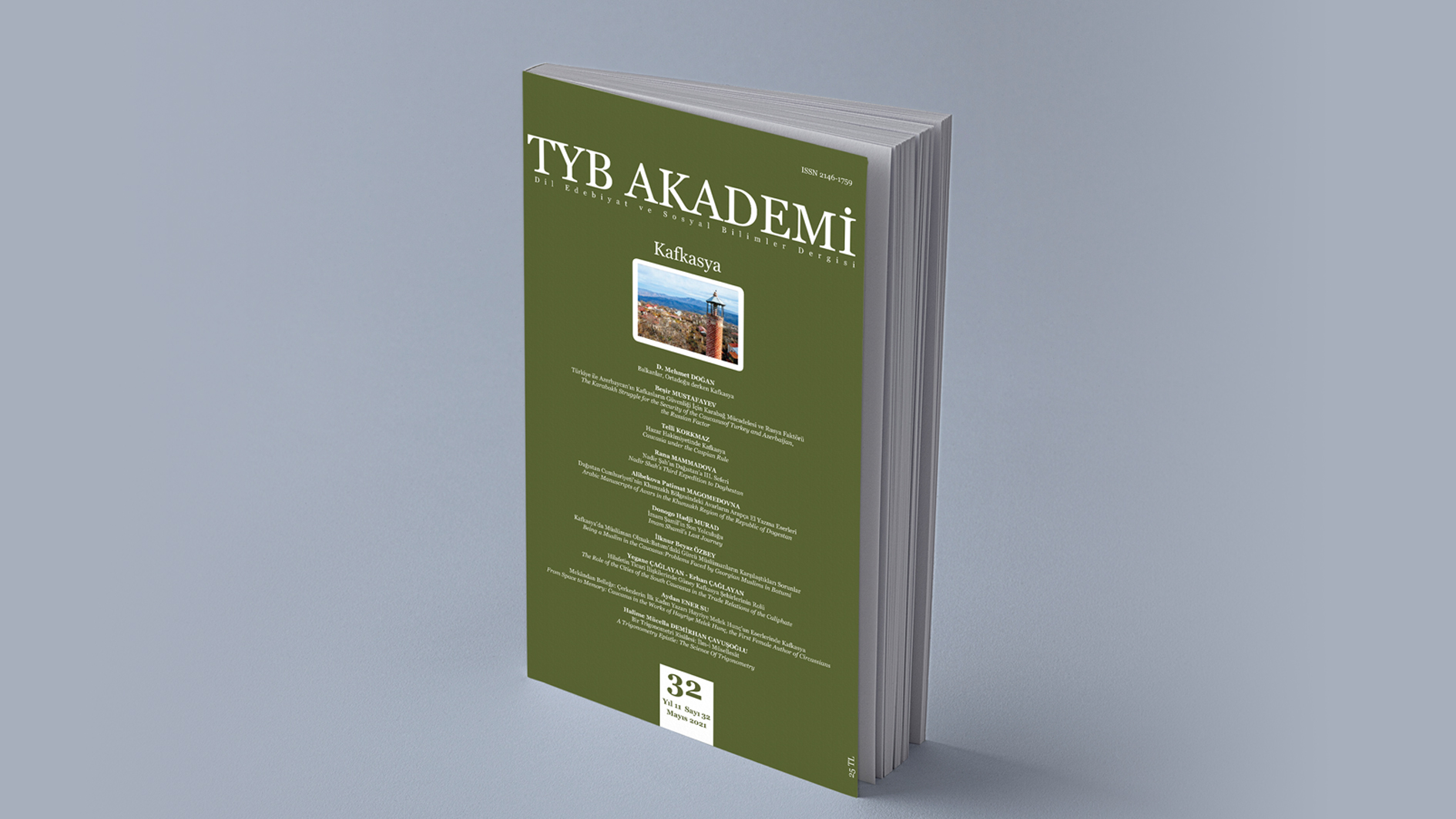
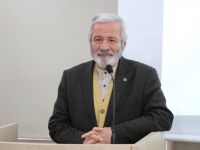
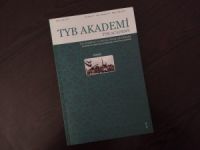
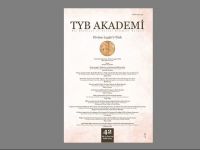
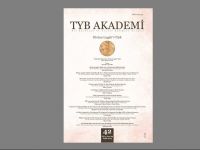





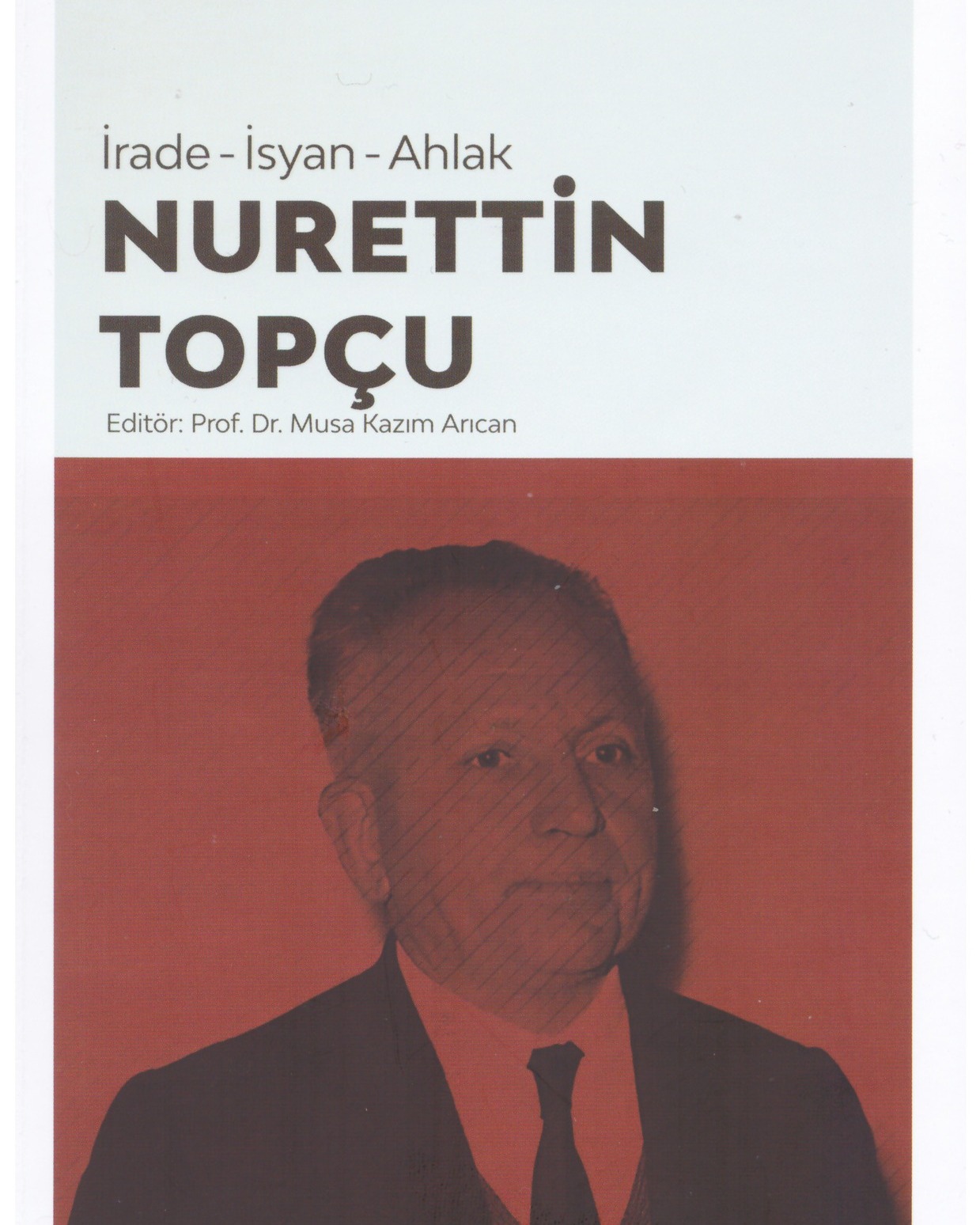
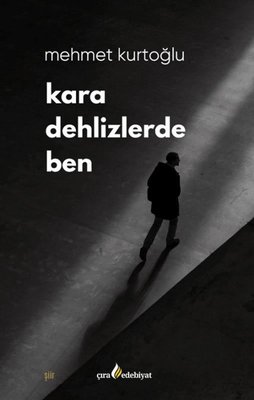
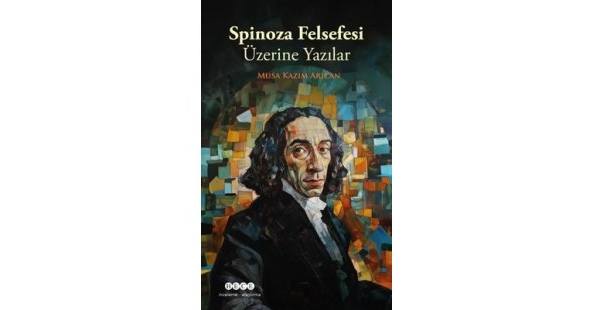
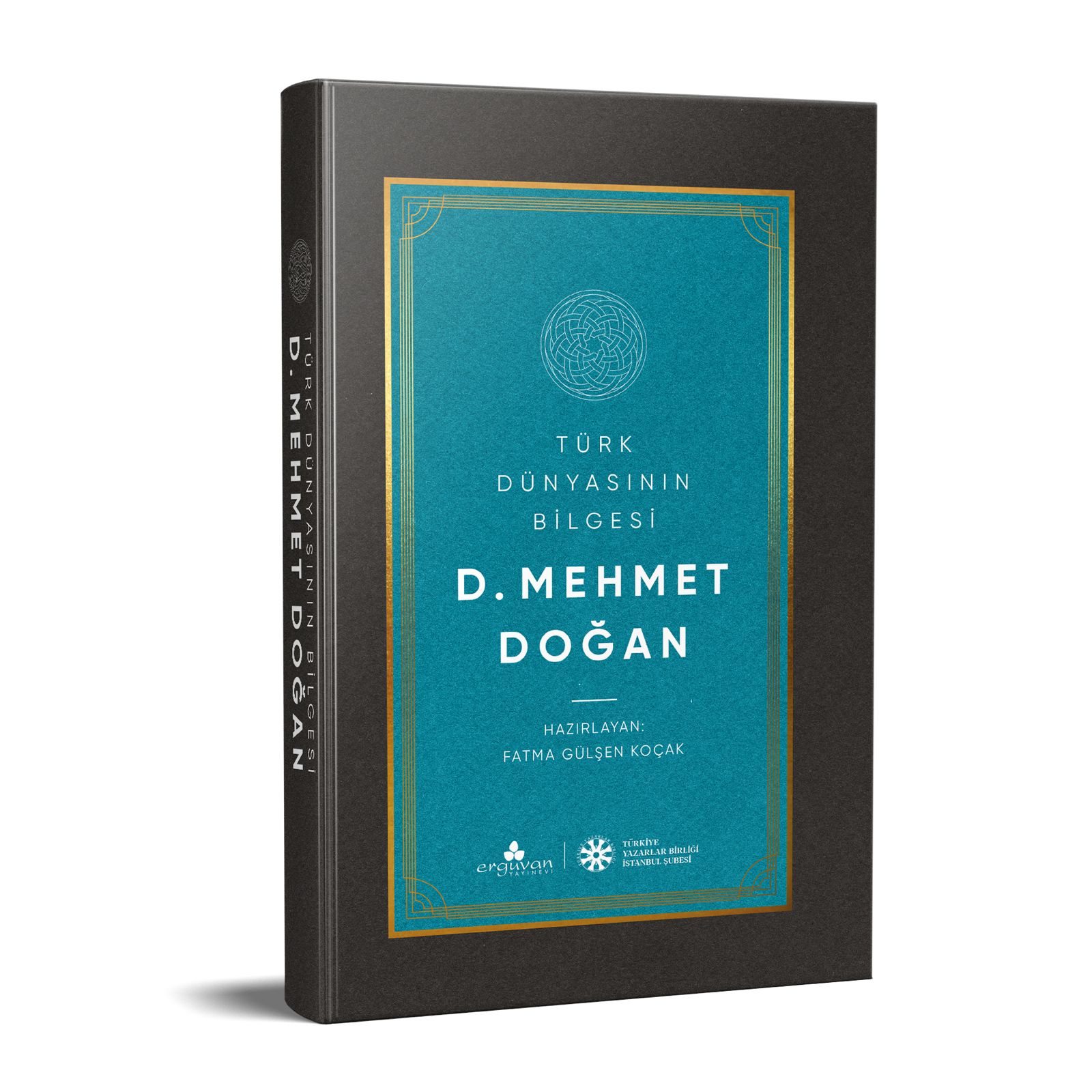
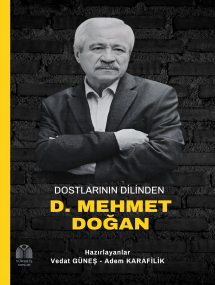
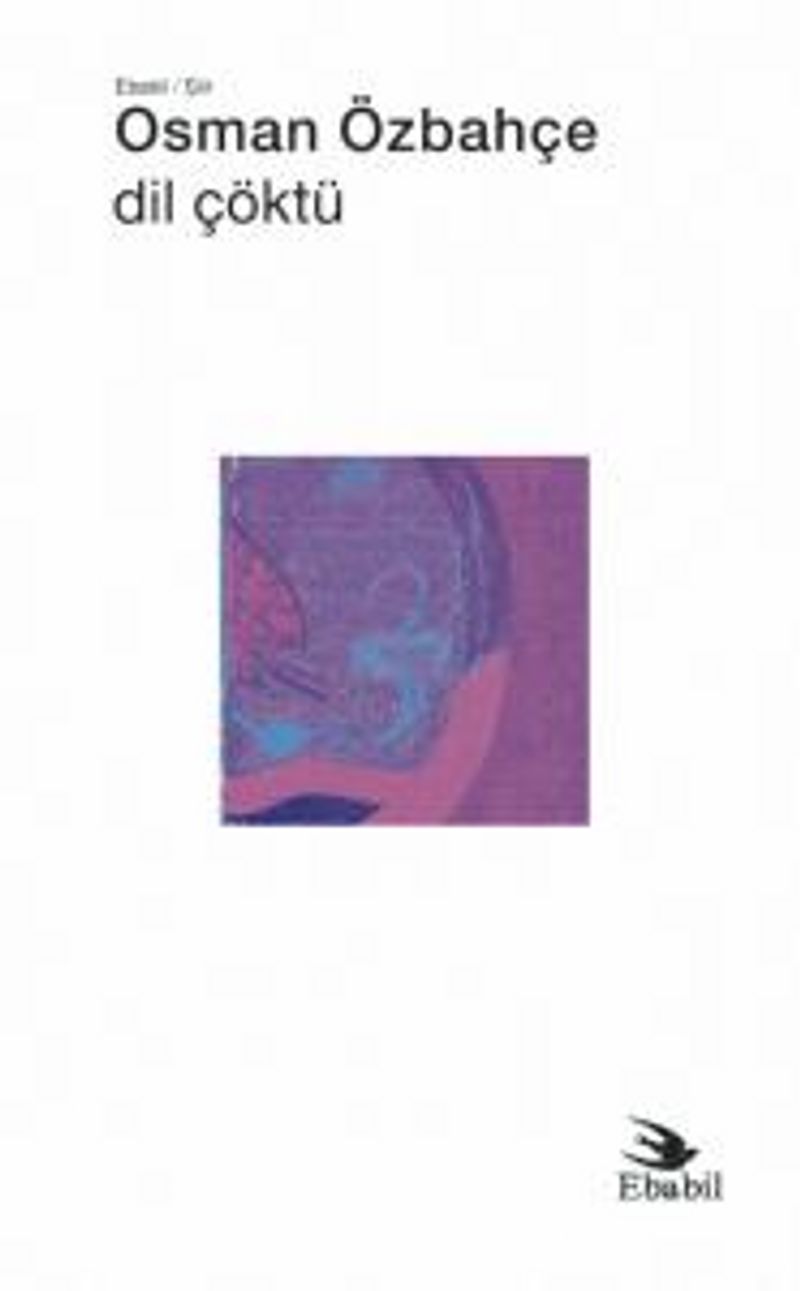
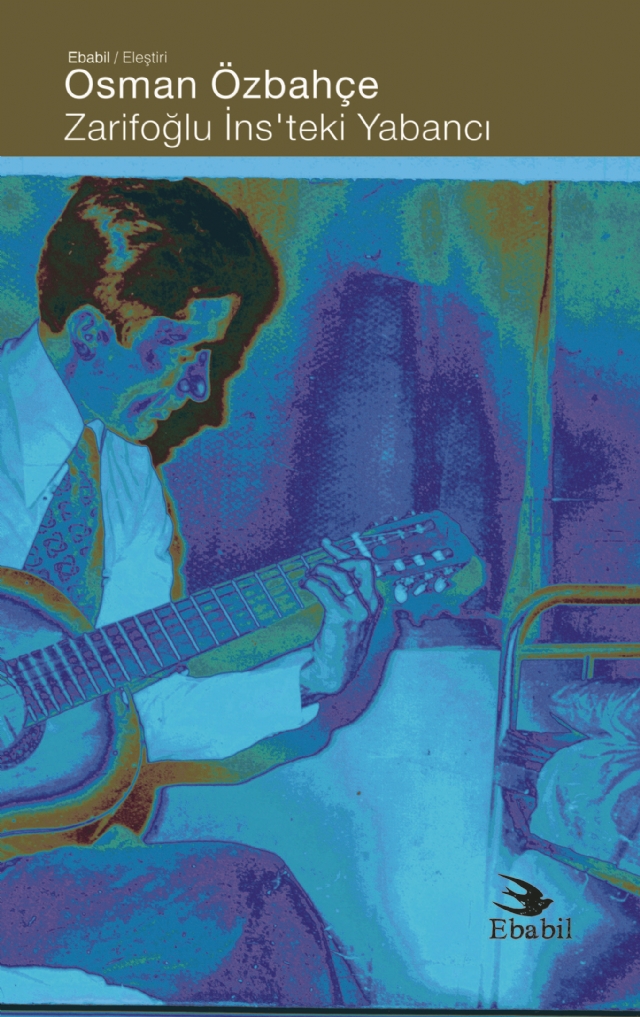
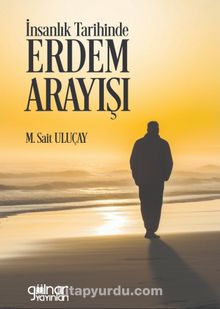
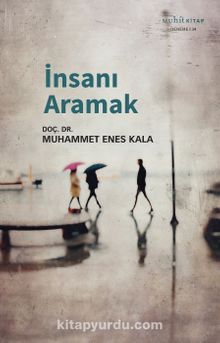
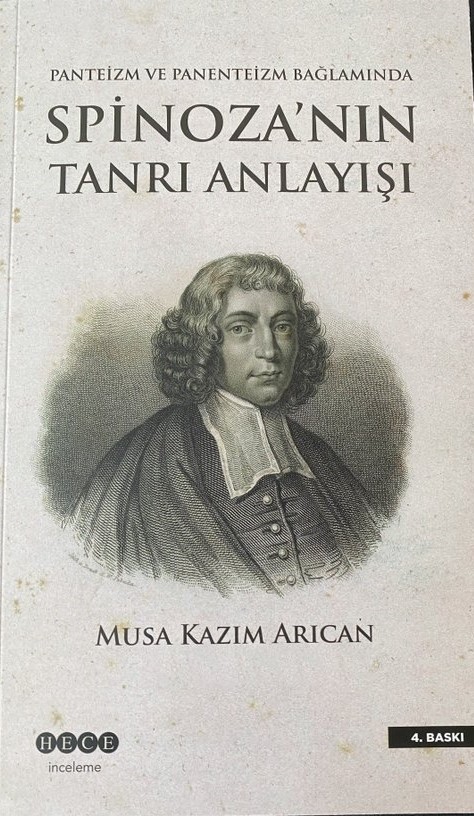

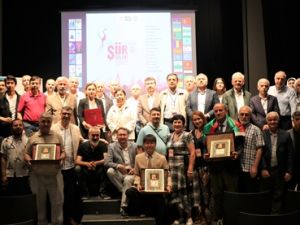
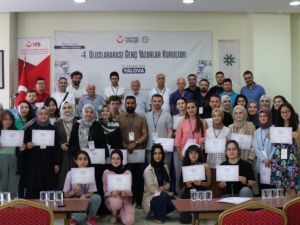



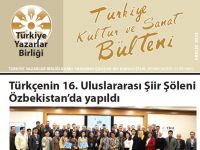
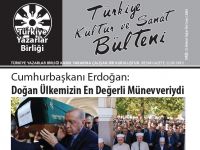
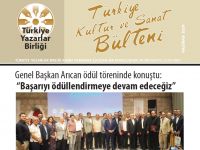
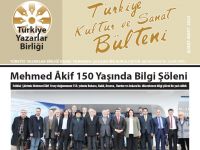
Türkçe karakter kullanılmayan ve büyük harflerle yazılmış yorumlar onaylanmamaktadır.